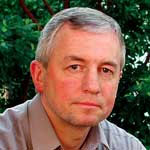Adopt a Scientist

This story inauguratesa new monthly feature that will highlight the research undertaken by SETIInstitute scientists, as well as provide an opportunity for you to join an expedition orparticipate directly in science or science education.
Adopt aSETI Institute scientist and become part of the adventure! Each scientist offers a compellingjourney of discovery. When you adopt a scientist, you help lead the way towardanswering profound questions about our place in the universe. Whichever scientistyou choose, you'll take part in making history!
The SETIInstitute's CarlSagan Center for the Study of Life in the Universe and the Center for SETIResearch are home to more than 90 scientists. Their work covers a broadspectrum of research dedicated to understanding the origin, nature andprevalence of life in the universe. In an effort to ensure this vital researchcontinues to prosper, we invite you to make a direct contribution to supportresearch.
Publicsupport is crucial as current trends in government funding are making itincreasingly difficult for astrobiologists to depend on that source of support.By participating in Adopt a SETI Institute Scientist, you will help provide anoffice, laboratory space, supplies and equipment, as well as valuable researchtime in the field. You can form a one-on-one relationship and participate inthe process of groundbreaking science with any number of the SETI Institute'sPrincipal Investigators (PIs).
Visit theInstitute's Adopt-a-Scientistwebsite to learn more about the program.
This month,SPACE.com features planetary geologist Dr. John Marshall, whose work wasfeatured in SETIThursday's "A Bumpy Road to Mars."
Marshall specializes in the study ofparticulate matter, dust and sand-size materials that comprise nebulae clouds,volcanic eruptions, dust storms, sand dunes, beach and river sediments, and theregoliths of the terrestrial planets, rocky moons and asteroids. Heavilyinvolved in the flight world, Marshall has developed instruments for three Marsmissions, for the Space Shuttle and Space Station, as well as a coffee-can sizeX-ray analyzer for use on the moon or Mars.
Get the Space.com Newsletter
Breaking space news, the latest updates on rocket launches, skywatching events and more!
To studyparticle transport, Marshall operated the Mars Wind Tunnel and the Venus WindTunnel at NASA Ames and developed the Ames Venus Simulator. He is currentlypart of a consortium of investigators developing a new wind tunnel to simulateaeolian action on Titan. To study the electrostatics of particles, John hasflown his experiments on the KC 135 (zero-gravity) aircraft and twice on Space Shuttle Columbia, as well asdived into dust devils in the Mojave Desert and conducted a number of laboratorysimulations of Mars. Currently he is developing a Lunar Laboratory for NASAAmes and has successfully duplicated electrostatic levitation of dust as seenon the moon.
If you'dlike to sponsor John Marshall, you will be able to join the science team on oneof two field trips — one to the Mohave and Nevada deserts to see its deploymentas part of a simulated Mars landing that involves analyzing rocks in stunningscenic setting (this trip is jointly sponsored by NASA/APL). The other "field"trip would be to the Egyptology museum at San Francisco State University where sarcophagi and other artifacts will be analyzed by MICA (MineralIdentification and Composition Analyzer), a miniaturized tool for in-situ x-raydiffraction (XRD), x-ray fluorescence (XRF), and optical analyses on unpreparedrocks accessed by a rover on Mars. A next-generation MICA could be a standardfeature in museums, mines, factories, laboratories and forensic applications,proving substantial return on any start-up investment.
For moreinformation on how to adopt this scientist, please call us toll free at1-866-616-3617 and ask for Karen Randall.
- Video Player: Listening for Life
- Video Player: Reflections on Fermi's Paradox
- SETI at SPACE.com
Join our Space Forums to keep talking space on the latest missions, night sky and more! And if you have a news tip, correction or comment, let us know at: community@space.com.









